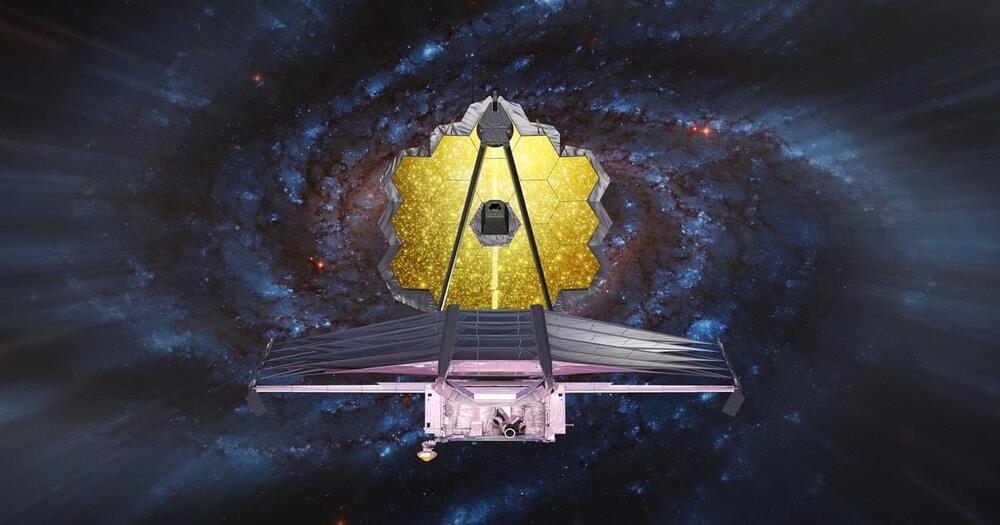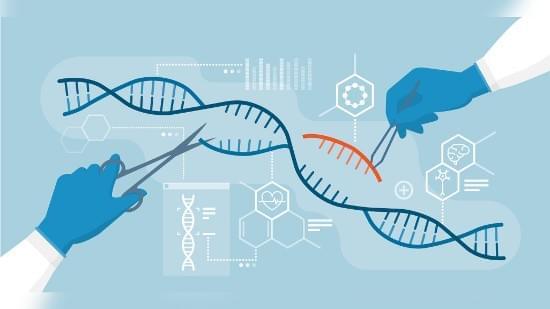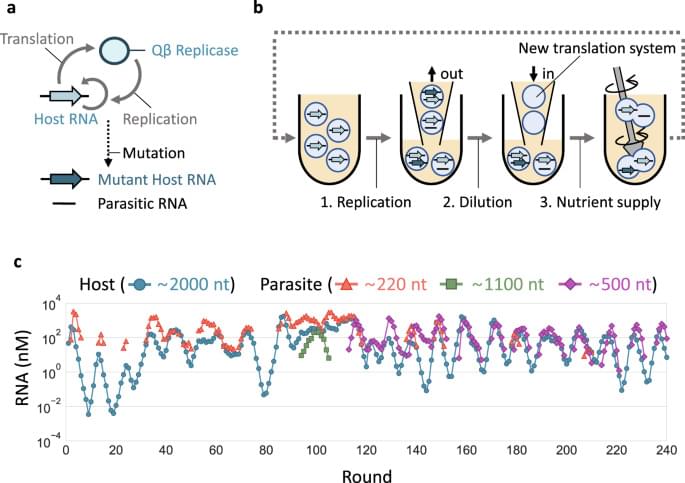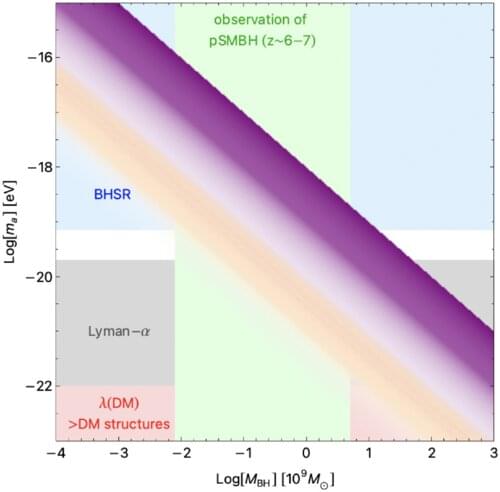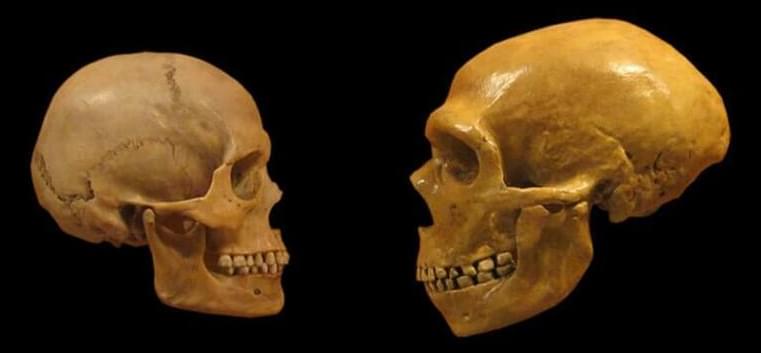Archive for the ‘evolution’ category: Page 82
Mar 29, 2022
‘Informational simplicity’ may explain why nature favors symmetry
Posted by Kelvin Dafiaghor in categories: biological, evolution
In biology, symmetry is typically the rule rather than the exception. Our bodies have left and right halves, starfish radiate from a central point and even trees, though not largely symmetrical, still produce symmetrical flowers. In fact, asymmetry in biology seems quite rare by comparison.
Does this mean that evolution has a preference for symmetry? In a new study, an international group of researchers, led by Iain Johnston, a professor in the Department of Mathematics at the University of Bergen in Norway, says it does.
Mar 26, 2022
Engage! Webb Telescope prepares to unlock the secrets of galactic evolution
Posted by Atanas Atanasov in categories: environmental, evolution, space
The first galaxies in the universe are a mystery to us — but that could soon change.
The cosmos has come a long way (pun intended). But the most fantastic story of all time isn’t fully understood — especially the early chapters, ‘written’ in history during the first two to three hundred million years of the universe’s 13.8 billion-year existence.
The James Webb Space Telescope could be the key. The observatory can look about three times as far back in time than the iconic Hubble. The Webb will detect infrared wavelengths long enough to pierce through the dense smog of all the light and dust that sits between Earth and the furthest galactic posts, revealing information about the ancient universe where these wavelengths began their journey through space billions of years ago.
Continue reading “Engage! Webb Telescope prepares to unlock the secrets of galactic evolution” »
Mar 23, 2022
Gene Editing Now Has A Next-Generation CRISPR Tool
Posted by Len Rosen in categories: bioengineering, biotech/medical, evolution
The creation of new proteins and peptides for use with CRISPR represents the next stage in the evolution of this technology.
Mar 22, 2022
The Sun is losing mass. And once featured Saturn-like rings?
Posted by Gemechu Taye in categories: evolution, space
These features could have a special significance for the Earth’s evolution.
When it comes to the universe and all of its mysteries, there are many things we know we don’t know. Some are minor and mostly inconsequential, but there are other cosmological unknowns that leave huge blanks in our understanding of how things work on large and small scales. How our planet was created is one such mystery. Let’s go all the way back to the beginning when the Sun was just a clump of gas and dust to understand how our solar system may have formed.
## How stars form.
Continue reading “The Sun is losing mass. And once featured Saturn-like rings?” »
Mar 19, 2022
Evolutionary transition from a single RNA replicator to a multiple replicator network
Posted by Saúl Morales Rodriguéz in category: evolution
Long-term experimental evolution shows that a single polymerase-encoding RNA replicator can evolve into a complex replicator network, shedding light on how a molecular replicator could have developed complexity before the emergence of life.
Mar 16, 2022
A talk by David Pearce for the Stepping into the Future conference 2022
Posted by Adam Ford in categories: bioengineering, biotech/medical, evolution, health, neuroscience, transhumanism
Synopsis: No sentient being in the evolutionary history of life has enjoyed good health as defined by the World Health Organization. The founding constitution of the World Health Organization commits the international community to a daringly ambitious conception of health: “a state of complete physical, mental and social wellbeing”. Health as so conceived is inconsistent with evolution via natural selection. Lifelong good health is inconsistent with a Darwinian genome. Indeed, the vision of the World Health Organization evokes the World Transhumanist Association. Transhumanists aspire to a civilization of superhappiness, superlongevity and superintelligence; but even an architecture of mind based on information-sensitive gradients of bliss cannot yield complete well-being. Post-Darwinian life will be sublime, but “complete” well-being is posthuman – more akin to Buddhist nirvana. So the aim of this talk is twofold. First, I shall explore the therapeutic interventions needed to underwrite the WHO conception of good health for everyone – or rather, a recognisable approximation of lifelong good health. What genes, allelic combinations and metabolic pathways must be targeted to deliver a biohappiness revolution: life based entirely on gradients of well-being? How can we devise a more civilized signalling system for human and nonhuman animal life than gradients of mental and physical pain? Secondly, how can genome reformists shift the Overton window of political discourse in favour of hedonic uplift? How can prospective parents worldwide – and the World Health Organization – be encouraged to embrace genome reform? For only germline engineering can fix the problem of suffering and create a happy biosphere for all sentient beings.
https://www.scifuture.org/the-end-of-suffering-genome-reform…id-pearce/
Mar 13, 2022
The dark side of the universe: How black holes became supermassive
Posted by Alan Jurisson in categories: cosmology, evolution, physics
Black holes are among the most compelling mysteries of the universe. Nothing, not even light, can escape a black hole. And at the center of nearly every galaxy there is a supermassive black hole that’s millions to billions of times more massive than the sun. Understanding black holes, and how they become supermassive, could shed light on the evolution of the universe.
Three physicists at the U.S. Department of Energy’s (DOE) Brookhaven National Laboratory have recently developed a model to explain the formation of supermassive black holes, as well as the nature of another phenomenon: dark matter. In a paper published in Physical Review Letters, theoretical physicists Hooman Davoudiasl, Peter Denton, and Julia Gehrlein describe a cosmological phase transition that facilitated the formation of supermassive black holes in a dark sector of the universe.
A cosmological phase transition is akin to a more familiar type of phase transition: bringing water to a boil. When water reaches the exact right temperature, it erupts into bubbles and vapor. Imagine that process taking place with a primordial state of matter. Then, shift the process in reverse so it has a cooling effect and magnify it to the scale of the universe.
Mar 11, 2022
A DNA “Oracle” for Predicting the Future Evolution of Gene Regulation
Posted by Quinn Sena in categories: biotech/medical, evolution, genetics, mathematics
Researchers created a mathematical framework to examine the genome and detect signatures of natural selection, deciphering the evolutionary past and future of non-coding DNA.
Despite the sheer number of genes that each human cell contains, these so-called “coding” DNA sequences comprise just 1% of our entire genome. The remaining 99% is made up of “non-coding” DNA — which, unlike coding DNA, does not carry the instructions to build proteins.
One vital function of this non-coding DNA, also called “regulatory” DNA, is to help turn genes on and off, controlling how much (if any) of a protein is made. Over time, as cells replicate their DNA to grow and divide, mutations often crop up in these non-coding regions — sometimes tweaking their function and changing the way they control gene expression. Many of these mutations are trivial, and some are even beneficial. Occasionally, though, they can be associated with increased risk of common diseases, such as type 2 diabetes, or more life-threatening ones, including cancer.
Mar 11, 2022
Future Evolution: How Will Humans Change in the Next 10,000 Years?
Posted by Dan Breeden in categories: asteroid/comet impacts, climatology, evolution, existential risks
READER QUESTION: If humans don’t die out in a climate apocalypse or asteroid impact in the next 10,000 years, are we likely to evolve further into a more advanced species than what we are at the moment? Harry Bonas, 57, Nigeria
Humanity is the unlikely result of four billion years of evolution.
From self-replicating molecules in Archean seas, to eyeless fish in the Cambrian deep, to mammals scurrying from dinosaurs in the dark, and then, finally, improbably, ourselves—evolution shaped us.


